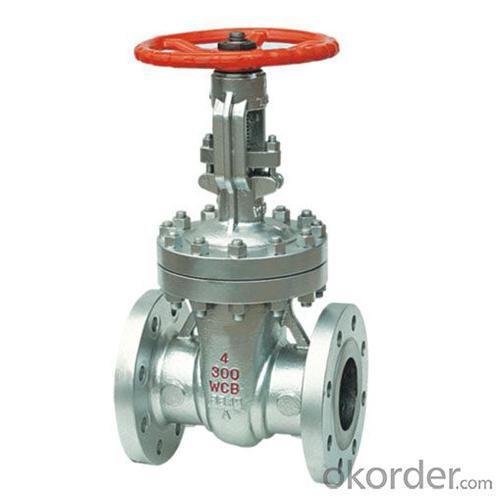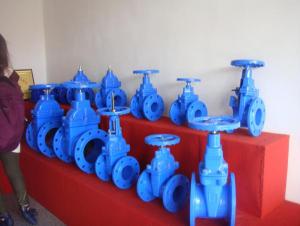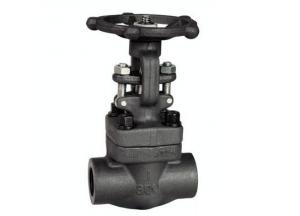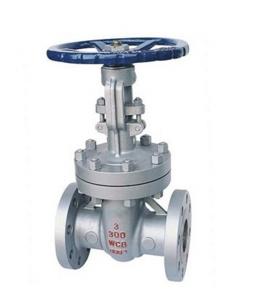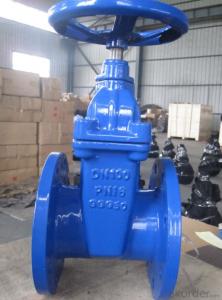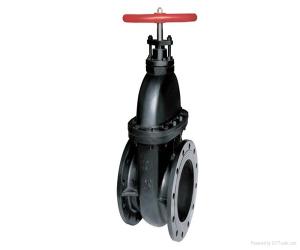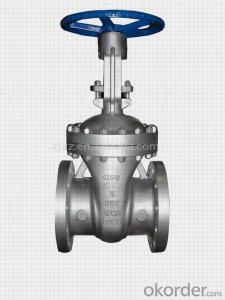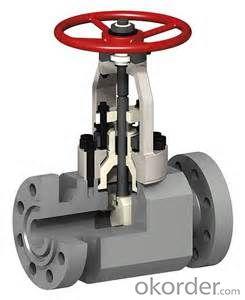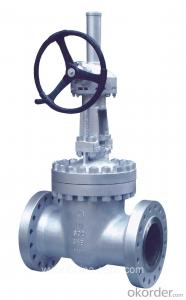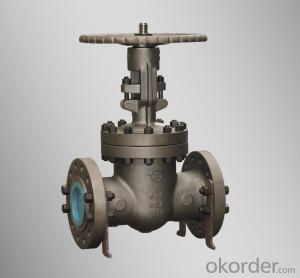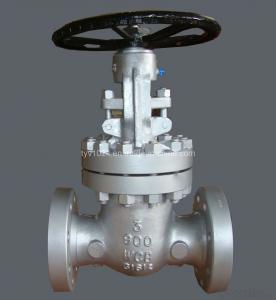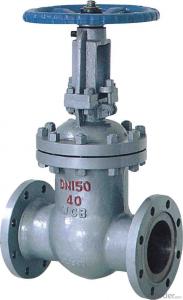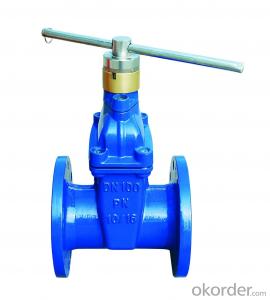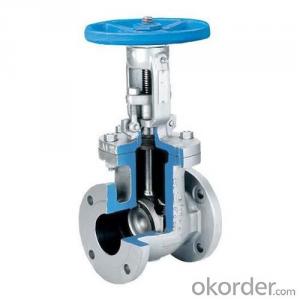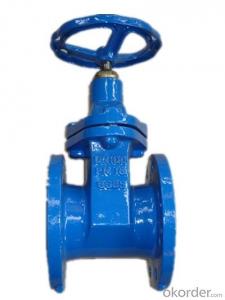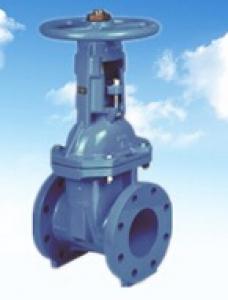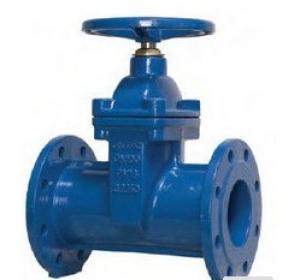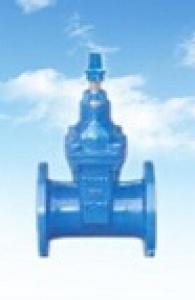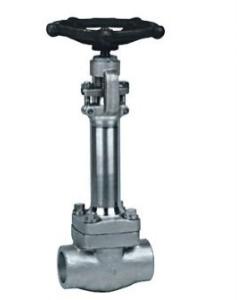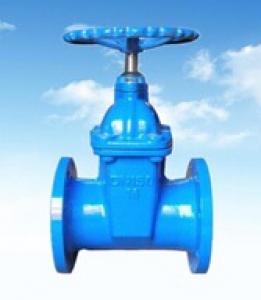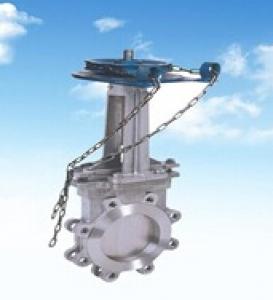Gate Valve DN300 Non-rising BS5163 for Whole Sales
- Loading Port:
- Tianjin
- Payment Terms:
- TT OR LC
- Min Order Qty:
- 50 pc
- Supply Capability:
- 5000 pc/month
OKorder Service Pledge
OKorder Financial Service
You Might Also Like
1.Structure of Gate Valve Description:
A gate valve, also known as a sluice valve, is a valve that opens by lifting a round or rectangular gate/wedge out of the path of the fluid. The distinct feature of a gate valve is the sealing surfaces between the gate and seats are planar, so gate valves are often used when a straight-line flow of fluid and minimum restriction is desired. The gate faces can form a wedge shape or they can be parallel. Gate valves are primarily used to permit or prevent the flow of liquids, but typical gate valves shouldn't be used for regulating flow, unless they are specifically designed for that purpose. Because of their ability to cut through liquids, gate valves are often used in the petroleum industry. For extremely thick fluids, a specialty valve often known as a knife valve is used to cut through the liquid. On opening the gate valve, the flow path is enlarged in a highly nonlinear manner with respect to percent of opening. This means that flow rate does not change evenly with stem travel. Also, a partially open gate disk tends to vibrate from the fluid flow. Most of the flow change occurs near shutoff with a relatively high fluid velocity causing disk and seat wear and eventual leakage if used to regulate flow. Typical gate valves are designed to be fully opened or closed.When fully open, the typical gate valve has no obstruction in the flow path, resulting in very low friction loss.
2. Main Features of the Gate Valve:
• Valve body cavity using non-toxic epoxy resin,both inside and outside flashboard completely is coated with rubber
• Free of water pollution
• High manufacturing accuracy
• High strength
• Environmental protection and energy saving
• Good visual effect
3. Images
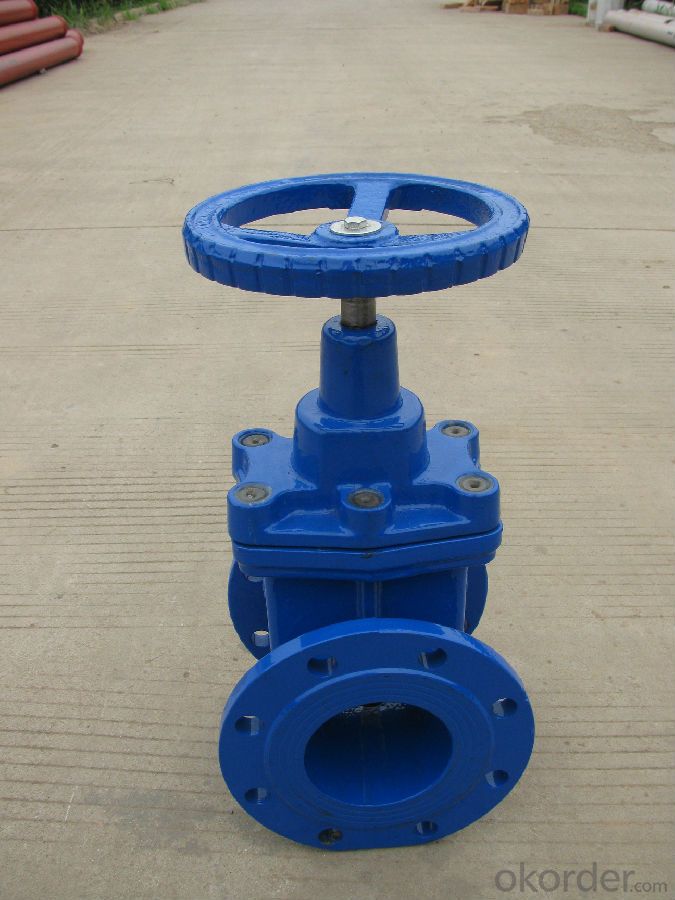
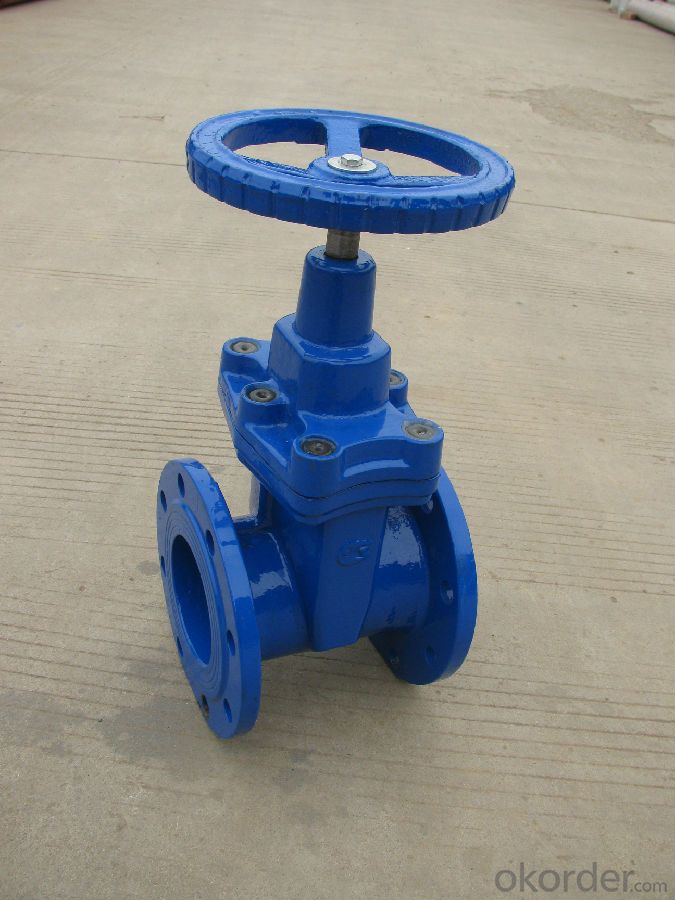
4. Gate valve Specification
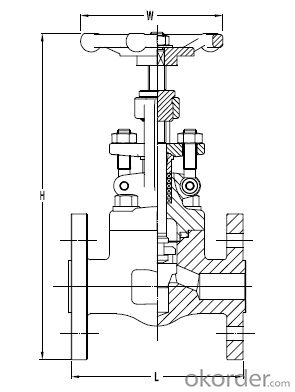
5.FAQ
1. What's are the characteristics of gate valve?
The distinct feature of a gate valve is the sealing surfaces between the gate and seats are planar, so gate valves are often used when a straight-line flow of fluid and minimum restriction is desired. The gate faces can form a wedge shape or they can be parallel.
2. What is the work principle of gate valve ?
The gate faces can form a wedge shape or they can be parallel. Gate valves are primarily used to permit or prevent the flow of liquids, but typical gate valves shouldn't be used for regulating flow, unless they are specifically designed for that purpose. Because of their ability to cut through liquids, gate valves are often used in the petroleum industry.
3. What is the structure?
Bonnets provide leakproof closure for the valve body. Gate valves may have a screw-in, union, or bolted bonnet. Screw-in bonnet is the simplest, offering a durable, pressure-tight seal. Union bonnet is suitable for applications requiring frequent inspection and cleaning. It also gives the body added strength. Bolted bonnet is used for larger valves and higher pressure applications.
- Q: Why can't the pressure measuring point be set at the two ends of the gate valve when measuring the resistance loss of the gate valve?
- the valve before the pressure measuring point, distance of valve straight pipe length is 5 times the diameter of the valve after the pressure valve, the distance is 10 times the diameter of straight pipe length.
- Q: Gate valve type Z40Y, Z40H letters - what does that mean?
- According to the provisions of the JB/T 308-2004 valve type programming method:Z== gate valve4== connection: flange0== structure: wedge type elastic RAMY== sealing surface material: hard alloyH== sealing surface material: Cr13 stainless steel
- Q: What is the difference between cut-off valve and gate valve?
- Simply put, the cut-off valve is one-way, only into, do not give up, the valve is two-way
- Q: Is the gate valve clockwise or closed?
- In general, the valve is clockwise to turn off. Some of the clockwise rotation of the valve on the move is open
- Q: What does the gate valve 150# mean? Is it stress PN? What's that, PN16 or?It's better to have some specific links, thanks!
- I think PSI is equal to 150#The sign behind is "PSI"You Baidu "ANSI standard pressure, pound scale and nominal pressure relations table" will knowI'm new, too, I understand
- Q: What is the difference between an elastic gate valve and a rigid gate?
- General rigid gate used in the temperature is not too high, the pressure is not too large occasions, flexible gate used in high temperature, high pressure, or relatively high sealing requirements.Valve closed, the sealing surface can only rely on medium pressure to seal, that is to rely on medium pressure to the gate sealing surface pressure to the other side of the seat to ensure the sealing surface seal, which is self sealing. Most of the valve is forced seal, that is, when the valve closes, to rely on external force to force the gate to the seat, in order to ensure the sealing surface sealing.
- Q: Yes, soft sealing gate valve can reach 25 kilograms, Fujian light valve company has this type of soft sealing gate valveAnonymous browsing | 28 times
- Soft seal butterfly valve seal is good, but can only withstand up to 16 pressure, or the plastic can not stand. A short period of time is OK, and it's also related to the workmanship and quality of the factory. The quality is poor.
- Q: What does the gate valve SZ45X-1.0 stand for?
- Z- stands for gate valves, 4 for flange connections, 5 for wedge wedge single gate, X for rubber seals, and 1.0- for PN1.0MP
- Q: What is an inverted seal gate valve?
- When the inverted sealing gate valve is fully opened, the sealing of the sealing is brought together, and the sealing effect is reduced, and the erosion of the filling to the fluid is reduced, and the service life of the filler is prolonged, and the possibility of leakage is reduced. Generally on the gate valve, stop valve has inverted sealing requirements.
- Q: What does gate valve DN80-PN16-QT450 mean?
- DN80 means: liquid, internal thread connection, the valve sealing surface material for rubber, seat sealing surface material for lining adhesive, nominal pressure of 10 kg / cm2, nominal diameter of 80mm Iron Butterfly valve.
Send your message to us
Gate Valve DN300 Non-rising BS5163 for Whole Sales
- Loading Port:
- Tianjin
- Payment Terms:
- TT OR LC
- Min Order Qty:
- 50 pc
- Supply Capability:
- 5000 pc/month
OKorder Service Pledge
OKorder Financial Service
Similar products
Hot products
Hot Searches
Related keywords



